Derby's Heritage Part 21 - Green Lane
w/e 25 September 2011
All this week's pictures were taken
with a Kodak DX6490
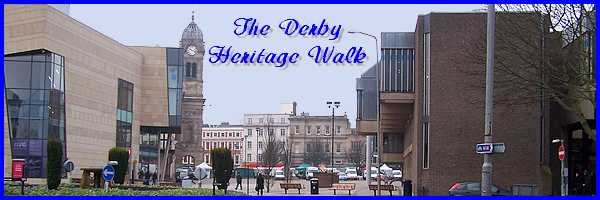
Although most of the images in this part focus on
some of the architectural gems in "Green Lane" I could
quite easily have used "Churches, Chapels and Theatres"
as a title even though most of them are not fulfilling their
original objective having been converted for other uses.
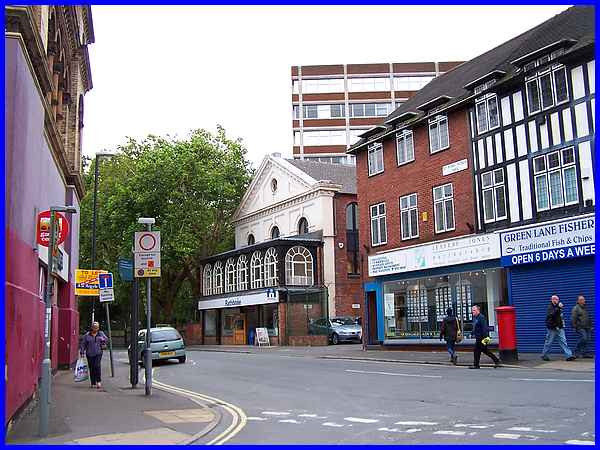
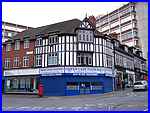 The first
of those converted chapels is actually in St Peter's Churchyard
and is seen here from Green Lane. It was built in 1816 costing
£1,100 and was nicknamed Marrowbones Chapel as butchers
were the main benefactors. When the chapel ran out of money,
£700 bought it for the Wesleyan Methodists and over the
years it was extended, modernised, altered and redecorated until
the 1990's when it was no longer a chapel but housed Derby County
FC's shop. Currently the building is home to Rathbone, a UK-wide
voluntary youth sector organisation. Old buildings on the corner
(right) house a number of different businesses. The first
of those converted chapels is actually in St Peter's Churchyard
and is seen here from Green Lane. It was built in 1816 costing
£1,100 and was nicknamed Marrowbones Chapel as butchers
were the main benefactors. When the chapel ran out of money,
£700 bought it for the Wesleyan Methodists and over the
years it was extended, modernised, altered and redecorated until
the 1990's when it was no longer a chapel but housed Derby County
FC's shop. Currently the building is home to Rathbone, a UK-wide
voluntary youth sector organisation. Old buildings on the corner
(right) house a number of different businesses.
|
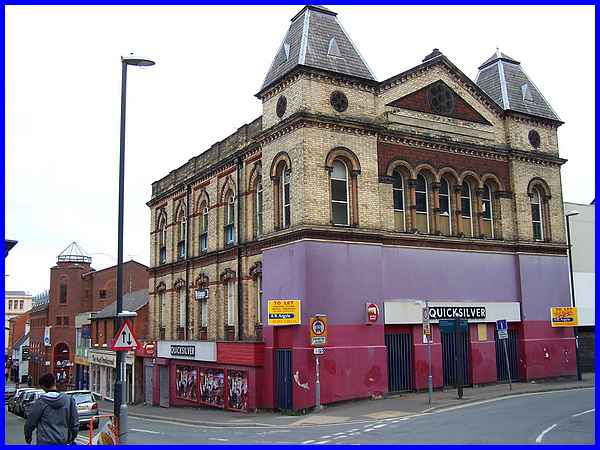
On the other corner of Green Lane and St Peter's Churchyard another
former Methodist Chapel was converted in the 1970s to a furniture
store and later into a Bingo Hall and Amusement Arcade. The shuttered
doors betray the fact that Quicksilver is currently closed and
the yellow signs advise that the ground floor retail premises
are "To Let".
|
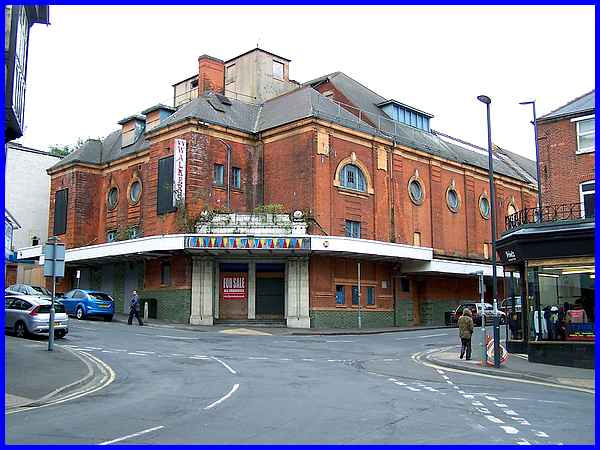
Diagonally opposite from Quicksilver on the corner of Macklin
Street is the building that opened as a theatre/music hall in
1914 as the Derby Hippodrome. Between 1930 and 1950 it operated
as a cinema but reopened in 1951 as a theatre before succumbing
to the bingo craze in the early 1960s. Originally designed by
Derby architect Alexander McPherson, it still features a number
of large circular windows but hit the headlines in 2008 when,
after standing empty for a time, "repair" work caused
part of the Grade II listed building to collapse. An earlier
claim to fame was that Flanagan and Allen wrote "Underneath
the Arches" in one of the theatre's dressing rooms and the
building is now the subject of a restoration plan by the Derby Hippodrome Restoration Trust.
|
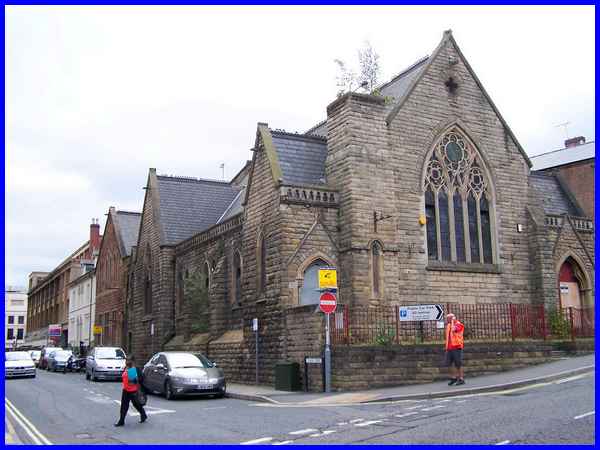
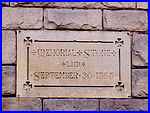 As we start
to ascend Green Lane the first street on the left is Gower Street
and on the corner stands the former Presbyterian Chapel built
by J Tait of Leicester. The Memorial Stone (left) is dated 1868
but after nearly a decade when it was not used it was refurbished
and opened as a public house in 1979. It has operated under various
names but another yellow sign declares that it is for sale by
auction. As we start
to ascend Green Lane the first street on the left is Gower Street
and on the corner stands the former Presbyterian Chapel built
by J Tait of Leicester. The Memorial Stone (left) is dated 1868
but after nearly a decade when it was not used it was refurbished
and opened as a public house in 1979. It has operated under various
names but another yellow sign declares that it is for sale by
auction.
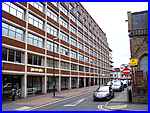 The number
of empty and disused buildings in this area is symptomatic of
the economic climate and the award by the government of a rail
contract to German competitors that will put 1400 people out
of work at Bombardier means that the Job Centre occupying part
of the eight storey block on the north side of Gower Street will
soon be thronged with local people seeking work. Although this
series is concerned with the heritage of Derby, I have to say
that this concrete and glass office block seems at odds with
the rest of the architecture in the area. The number
of empty and disused buildings in this area is symptomatic of
the economic climate and the award by the government of a rail
contract to German competitors that will put 1400 people out
of work at Bombardier means that the Job Centre occupying part
of the eight storey block on the north side of Gower Street will
soon be thronged with local people seeking work. Although this
series is concerned with the heritage of Derby, I have to say
that this concrete and glass office block seems at odds with
the rest of the architecture in the area.
|
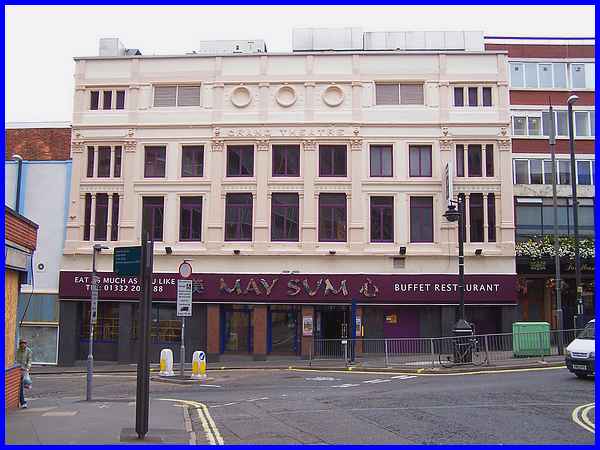
Gower Street was formerly known as Blood Alley but was renamed
after William Leveson-Gower (pronounced Looson Gore) who was
the Derby MP between 1847 and 1852. It runs between Green Lane
and Babington Lane and facing Gower Street at the far end is
the former Grand Theatre. This was Derby's second theatre and
was built in 1886 to a design by Oliver Essex. Like the former
Presbyterian Chapel at the other end of Gower Street the theatre
has operated more recently as a night club under a variety of
names and as the sign now says, it is a Buffet Restaurant.
On the right hand side of Green Lane are streets that, although
they appear very similar and unremarkable, an investigation into
the origins of their names reveals something of Derby's past.
Macklin Street for example that we passed earlier was named after
Revd. Roseingrave Macklin (1770-1863) the first vicar and patron
of Christ Church on Normanton Road.
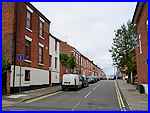 Crompton
Street (left) almost opposite Gower Street, commemorates banker
Alderman John Bell Crompton JP DL (1788-1859) Mayor of Derby
in 1828, 1837 and 1842 whilst the name for Wilson Street (right) Crompton
Street (left) almost opposite Gower Street, commemorates banker
Alderman John Bell Crompton JP DL (1788-1859) Mayor of Derby
in 1828, 1837 and 1842 whilst the name for Wilson Street (right)
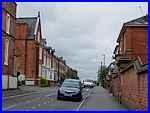 was probably
inspired by the birth of Revd. Macklin's eldest son in 1843,
Gerard Roseingrave Wilson Macklin. The vicar's grandfather had
assumed the name Wilson by Royal Licence in 1784 as heir to Revd
Thomas Wilson, Bishop of Sodor and Man. was probably
inspired by the birth of Revd. Macklin's eldest son in 1843,
Gerard Roseingrave Wilson Macklin. The vicar's grandfather had
assumed the name Wilson by Royal Licence in 1784 as heir to Revd
Thomas Wilson, Bishop of Sodor and Man.
A third street, Forester Street is also off the right hand side
of Green Lane and we will pass it a little further on (see below).
|
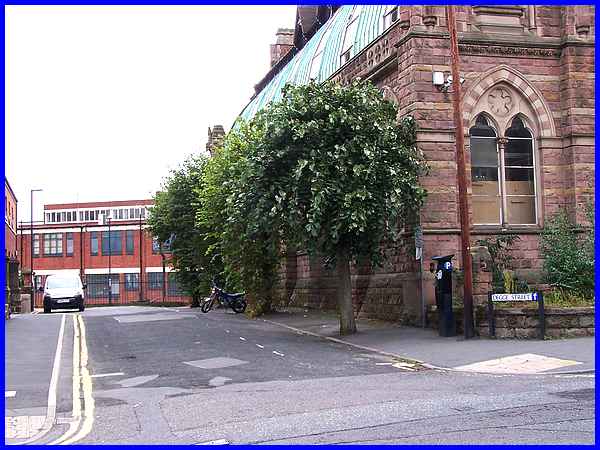
But returning to the left hand side of Green Lane and opposite
Wilson Street is Degge Street. This short street was once the
drive and led to Abbott's Hill House, built by Simon Degge MD
FSA FRS (1694-1729). Simon was the great grandson of Sir Simon
Degge (1612-1703) High Sheriff of Derbyshire.
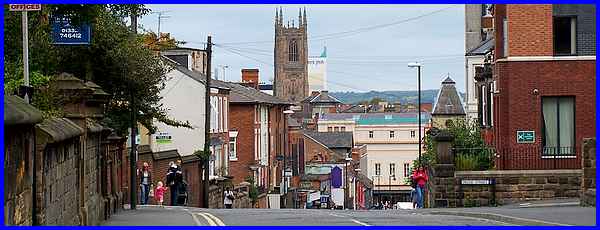
From this point on Green Lane near Degge Street a glance back
from the brow of the hill reveals two prominent features in the
distance - the old tower of the cathedral and the newer, but
less impressive, features of the Jurys Inn. Green Lane was the
original southwards route to Burton Upon Trent and was first
recorded in 1510 when the name was descriptive but is now far
from being so.
|
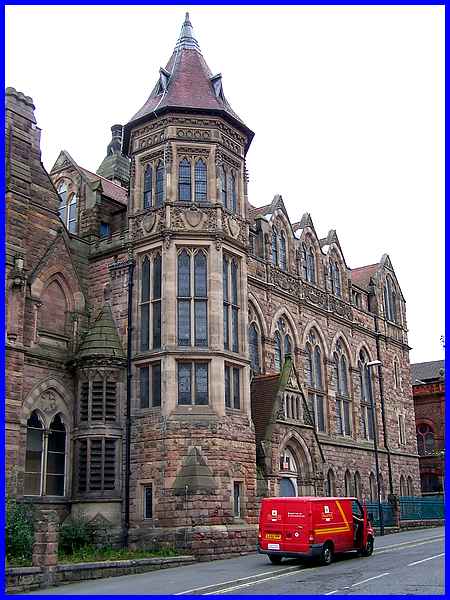
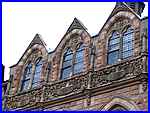 Undoubtedly
the most impressive architectural structure on Green Lane is
the Grade II* listed former College of Art adjacent to Degge
Lane that was built in the grounds of Abbott's Hill House in
1876 by the Derby Corporation and enlarged in 1894. The Gothic
style with pronounced Arts and Crafts elements resulted from
the collaboration of F. W. Waller (1846-1933) of Gloucester,
a former student and principal Thomas Simmonds. It became part
of the University of Derby and home to the 126 seat Metro Cinema
showing more alternative, art house and foreign films. With the
opening of the Derby
Quad, the building sadly now stands empty. Undoubtedly
the most impressive architectural structure on Green Lane is
the Grade II* listed former College of Art adjacent to Degge
Lane that was built in the grounds of Abbott's Hill House in
1876 by the Derby Corporation and enlarged in 1894. The Gothic
style with pronounced Arts and Crafts elements resulted from
the collaboration of F. W. Waller (1846-1933) of Gloucester,
a former student and principal Thomas Simmonds. It became part
of the University of Derby and home to the 126 seat Metro Cinema
showing more alternative, art house and foreign films. With the
opening of the Derby
Quad, the building sadly now stands empty.
|
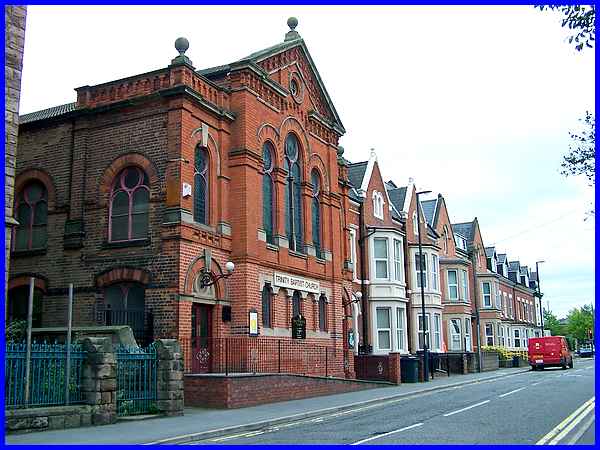
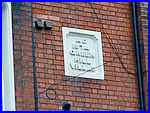 Next
to the former College of Art is the Trinity Baptist Chapel but unlike the previous
religious buildings we have seen so far in the vicinity of Green
Lane, this one is still open and fulfilling its original function
as a place of worship. It was built about 1880 and stonework
(left) on the adjacent Green Hill Villas show that they too date
from 1874. Next
to the former College of Art is the Trinity Baptist Chapel but unlike the previous
religious buildings we have seen so far in the vicinity of Green
Lane, this one is still open and fulfilling its original function
as a place of worship. It was built about 1880 and stonework
(left) on the adjacent Green Hill Villas show that they too date
from 1874.
Across from these buildings is Forester Street (right) which
was named after 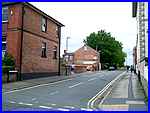 Alderman
Richard Forester JP DL FLS (1771-1843) son of Richard French
and Millicent Mundy who took the name Forester on reaching his
majority as he was the posthumous heir of William Forester of
Broadfield Hall in Hertfordshire. A fading painted sign on the
building in the distance indicates that there is yet another
chapel and this one too is also open. The premises in Forester
Street house the Derby Central Spiritualist Chapel, one of
a number of similar churches affiliated to the Spiritualists'
National Union in the East Midlands. Alderman
Richard Forester JP DL FLS (1771-1843) son of Richard French
and Millicent Mundy who took the name Forester on reaching his
majority as he was the posthumous heir of William Forester of
Broadfield Hall in Hertfordshire. A fading painted sign on the
building in the distance indicates that there is yet another
chapel and this one too is also open. The premises in Forester
Street house the Derby Central Spiritualist Chapel, one of
a number of similar churches affiliated to the Spiritualists'
National Union in the East Midlands.
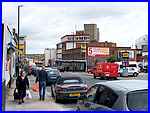 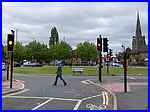 Major
road works have recently been completed in Derby and Green Lane
now meets a large new traffic island that has been named Mill
Hill Corner (left). A new road has been forged through to complete
the inner ring road but Babington Lane (right) that we saw briefly
earlier along Gower Street also meets at this junction. It also
means that I may have to revise my original plans when we resume
in Part 22. Major
road works have recently been completed in Derby and Green Lane
now meets a large new traffic island that has been named Mill
Hill Corner (left). A new road has been forged through to complete
the inner ring road but Babington Lane (right) that we saw briefly
earlier along Gower Street also meets at this junction. It also
means that I may have to revise my original plans when we resume
in Part 22.
|

